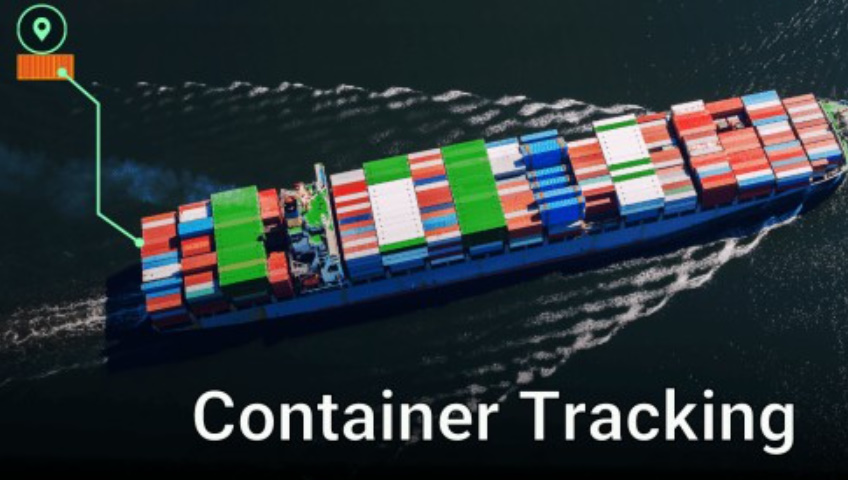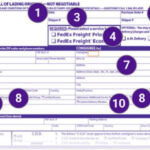1. Introduction to Container Tracking
Container tracking refers to the process of monitoring the location, movement, and condition of cargo containers as they travel through various stages of the supply chain. This practice has become increasingly important in global trade, where millions of containers move across oceans, borders, and logistics networks every day. Container tracking ensures that goods reach their destination on time, in good condition, and with minimal disruption.
The significance of container tracking extends beyond mere location updates. It plays a critical role in optimizing supply chain operations, reducing theft and loss, and enhancing overall efficiency. With the advent of modern technology, container tracking has evolved from manual record-keeping to sophisticated systems that offer real-time data and insights.
2. History of Container Tracking
The concept of container shipping revolutionized global trade in the mid-20th century, but the need for effective tracking systems became apparent as the scale of operations grew. Initially, container tracking was rudimentary, relying on manual logs and visual inspections. However, as containerized shipping expanded, so did the complexity of managing and monitoring these assets.
Early tracking methods involved simple barcodes and manual entry of data, which was often prone to errors. The introduction of radio-frequency identification (RFID) in the 1980s marked a significant advancement, enabling more accurate and automated tracking. This technology laid the groundwork for the GPS-based and Internet of Things (IoT) solutions that dominate the industry today.
3. How Container Tracking Works
Modern container tracking relies on a combination of technologies to provide accurate and real-time data. GPS tracking is one of the most common methods, utilizing satellites to pinpoint the exact location of a container anywhere in the world. This data is often transmitted via cellular networks or satellite communication systems, ensuring continuous updates even in remote areas.
RFID and barcode scanning are also widely used, particularly in ports and warehouses. RFID tags attached to containers can be read by scanners as they pass through checkpoints, automatically logging their movement. IoT devices, which can monitor not only location but also environmental conditions such as temperature and humidity, are increasingly being integrated into containers. These devices provide valuable data for sensitive cargo like pharmaceuticals and perishable goods.
4. Benefits of Container Tracking
The implementation of container tracking systems offers numerous benefits, particularly in enhancing supply chain visibility. Companies can monitor the movement of goods in real-time, allowing them to anticipate delays, reroute shipments if necessary, and provide accurate delivery estimates to customers.
Another significant advantage is the reduction of theft and loss. Containers can be tracked throughout their journey, making it easier to detect and respond to unauthorized access or deviations from planned routes. This level of oversight can also deter potential thieves.
Operational efficiency is another key benefit. With automated tracking, the manual processes of logging and monitoring are greatly reduced, freeing up resources and reducing the risk of human error. Moreover, container tracking can contribute to environmental sustainability by optimizing routes and reducing fuel consumption, thus lowering the carbon footprint of shipping operations.
5. Types of Container Tracking Systems
Container tracking systems can be broadly categorized into passive and active systems. Passive tracking involves devices that only transmit data when queried, making them suitable for less time-sensitive applications. Active tracking systems, on the other hand, continuously transmit data, providing real-time updates on the container’s status and location.
Tracking systems can also be differentiated by the frequency of updates they provide. Real-time systems offer continuous monitoring, which is crucial for high-value or sensitive cargo. Periodic update systems, while less resource-intensive, are often used for less critical shipments.
Integration with supply chain management software is another important aspect of modern container tracking systems. This allows for seamless data flow between tracking devices and the broader logistics network, enabling better decision-making and coordination.
6. Key Players in the Container Tracking Industry
The container tracking industry is dominated by a few key players, including both established companies and innovative startups. Major players like Maersk, Hapag-Lloyd, and MSC have developed proprietary tracking solutions that are integrated into their global operations. These companies often collaborate with technology providers to enhance their tracking capabilities.
Emerging startups, such as Traxens and Globe Tracker, are pushing the boundaries of container tracking by introducing new technologies like blockchain and AI-driven analytics. These companies are focused on providing more granular data and predictive insights, which can help businesses anticipate and mitigate risks in the supply chain.
Collaborative initiatives, such as the Digital Container Shipping Association (DCSA), are also playing a crucial role in standardizing tracking technologies and protocols across the industry, ensuring that data can be shared securely and efficiently between different stakeholders.
7. Challenges in Container Tracking
Despite the advancements in technology, container tracking still faces several challenges. One of the primary issues is the technological complexity involved in maintaining reliable communication with containers that are often in remote or harsh environments, such as on the open sea or in busy ports.
Data privacy and security are also significant concerns. With the vast amount of data generated by tracking systems, ensuring that this information is protected from unauthorized access is crucial. Cybersecurity threats are a growing concern, particularly as tracking systems become more interconnected.
Regulatory compliance is another challenge, as different countries and regions have varying requirements for container tracking and data management. Companies must navigate these regulations while ensuring that their tracking systems are effective and efficient.
Infrastructure and connectivity limitations, especially in developing regions, can also hinder the effectiveness of container tracking. Without reliable communication networks, real-time tracking can be difficult to maintain, leading to potential gaps in data.
8. Innovations in Container Tracking
The future of container tracking is being shaped by several technological innovations. Artificial intelligence (AI) and machine learning are being increasingly applied to analyze tracking data, providing predictive insights that can help companies optimize their supply chains. For example, AI can predict potential delays or disruptions based on historical data, allowing for proactive adjustments.
Blockchain technology is also making inroads into the container tracking industry. By providing a secure and transparent way to record and share data, blockchain can help ensure the integrity of tracking information and reduce the risk of fraud.
Predictive analytics, powered by big data, is another emerging trend. By analyzing vast amounts of tracking data, companies can gain insights into patterns and trends, enabling them to make more informed decisions and improve overall supply chain efficiency.
9. Container Tracking and Industry 4.0
Container tracking is a critical component of Industry 4.0, the fourth industrial revolution characterized by the integration of digital technologies into manufacturing and logistics. In this context, container tracking systems are becoming increasingly sophisticated, with the ability to integrate with autonomous systems such as drones and automated guided vehicles (AGVs).
The role of container tracking in smart logistics is particularly significant. By providing real-time data and predictive insights, tracking systems can help automate decision-making processes and optimize the flow of goods through the supply chain. This not only improves efficiency but also reduces costs and environmental impact.
As Industry 4.0 continues to evolve, the future of container tracking will likely involve even greater levels of automation and integration, with systems capable of coordinating complex logistics networks with minimal human intervention.
10. Regulatory Environment and Standards
The regulatory environment for container tracking is complex, with numerous international standards and guidelines governing the use of tracking technologies. Organizations such as the International Maritime Organization (IMO) and the International Organization for Standardization (ISO) have developed standards that ensure the interoperability and security of container tracking systems.
Compliance with maritime laws is essential for companies involved in international shipping. These laws often require the use of specific tracking technologies and data management practices to ensure the safety and security of goods in transit.
Customs and port authorities also play a crucial role in the container tracking ecosystem. They rely on tracking data to manage the flow of goods through ports and to ensure that all shipments comply with local regulations. This makes it essential for tracking systems to be compatible with the systems used by these authorities.
11. Case Studies: Success Stories in Container Tracking
Several companies have successfully implemented container tracking systems, leading to significant improvements in their operations. For example, Maersk’s Remote Container Management (RCM) system has revolutionized the way refrigerated containers (reefers) are monitored, providing real-time data on temperature, humidity, and power status. This has allowed Maersk to reduce spoilage and improve customer satisfaction.
Another success story is Hapag-Lloyd’s “Hapag-Lloyd Navigator,” a digital platform that provides customers with real-time visibility into their shipments. By integrating tracking data with other logistics information, the platform has enabled customers to manage their supply chains more effectively.
These case studies demonstrate the tangible benefits of container tracking, from enhanced operational efficiency to improved customer service and reduced environmental impact.
12. The Future of Container Tracking
The future of container tracking is likely to be shaped by several emerging trends and technologies. One of the most significant trends is the increasing use of AI and machine learning to analyze tracking data and provide predictive insights. This will allow companies to anticipate and mitigate risks in their supply chains more effectively.
Another key trend is the integration of container tracking with other digital technologies, such as blockchain and IoT. This will enable more secure and transparent data sharing, as well as more comprehensive monitoring of containers and their contents.
Potential disruptions to the industry could come from new regulations, changes in global trade patterns, or the emergence of new technologies. However, companies that are able to adapt to these changes and leverage the latest innovations in container tracking will be well-positioned to succeed in the future.
13. How to Choose a Container Tracking Solution
Choosing the right container tracking solution for your business involves several key considerations. First, you need to assess your specific tracking needs, such as the frequency of updates, the type of cargo being tracked, and the level of integration required with your existing systems.
Cost is another important factor. While real-time tracking systems offer the most comprehensive data, they can also be more expensive to implement and maintain. A cost-benefit analysis can help you determine whether the investment is justified based on the potential improvements in efficiency and security.
You also need to decide whether to opt for a custom solution tailored to your specific needs or an off-the-shelf product that offers more general functionality. Custom solutions can provide more precise tracking and integration with your existing systems, but they can also be more expensive and time-consuming to implement.
14. Implementing Container Tracking in Your Business
Implementing a container tracking system in your business involves several steps. First, you need to select the right tracking solution based on the factors discussed earlier. Once the system is selected, you need to ensure that it is properly integrated with your existing IT infrastructure.
Training and change management are also crucial. Employees need to be trained on how to use the new system effectively, and any changes to existing processes need to be managed carefully to avoid disruption.
Finally, continuous monitoring and improvement are essential. Even after the system is implemented, you should regularly review its performance and make any necessary adjustments to ensure that it continues to meet your needs.
15. Frequently Asked Questions (FAQs) About Container Tracking
- What is Container Tracking?
Container tracking is the process of monitoring the location, movement, and condition of cargo containers throughout their journey in the supply chain. - How Does Container Tracking Improve Supply Chain Management?
It enhances visibility, reduces theft and loss, and improves operational efficiency by providing real-time data on container movements. - What Technologies Are Used in Container Tracking?
GPS, RFID, IoT devices, and blockchain are commonly used technologies in container tracking systems. - What Are the Costs Associated with Container Tracking?
Costs vary depending on the type of tracking system, the frequency of updates, and the level of integration required. - Can Container Tracking Systems Be Integrated with Existing IT Infrastructure?
Yes, many tracking systems are designed to integrate seamlessly with existing supply chain management and logistics software. - What Are the Security Risks of Container Tracking?
Data privacy and cybersecurity are major concerns, as tracking systems generate and transmit large amounts of sensitive data.





